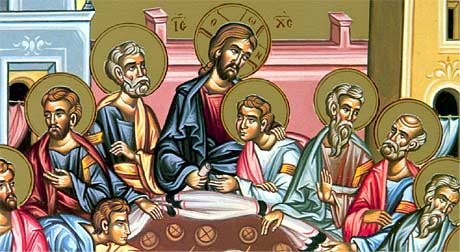The liturgical practice of Jerusalem and the theology which it expressed were absorbed into the Eastern tradition, making a prominent contribution to its development. The language of fear with regard to the sacrament appears again in the teaching of St. John Chrysostom and is reflected in the Byzantine Liturgy: while the characteristic features of the eucharistic prayer in Jerusalem appear in the first Eastern eucharistic rite which has survived, that of the Apostolic Constitutions.
Think about some of the wording in the Divine Liturgy:
- Grant that they who serve You in fear and love, may partake of Your holy mysteries without blame and condemnation.
- Let us stand aright! Let us stand in awe!
- May the partaking of Your holy mysteries, O Lord, be not for my judgment or condemnation
- Approach with fear of God
There is just something about the Divine Liturgy which projects this sense of the great mystery which should produce in us a reverent fear and awareness that God is actually sharing Himself with us in a very special manner.
The Apostolic Constitutions is a handbook of church teaching and practice dating from the last quarter of the fourth century. Based on earlier works of a similar kind, it claims to be the ordinance of the apostles transmitted to the Church by Clement of Rome. The Liturgy contained in the eighth book is therefore often called the Clementine Liturgy. The earliest complete text of a eucharistic rite to have survived, it represents in general the usage of the Church of Antioch, although it was perhaps never actually used. The compiler of the book was somewhat unorthodox, though not positively Arian. For the history of Christian worship its character as a specimen rite has great value, for unlike those rites which have been used it has not been modified to accord with developing practice. In its general form it can be taken as representing the rite of Antioch in the late fourth century, from which that of Constantinople ultimately derived.
What is important to remember is that Christ did not leave behind a definite ritual which He expected His disciples to follow. He established the Eucharist at a simple Jewish Passover Meal which was, tradition tells us, filled with certain prayers and ritualistic actions. The apostles, however, didn’t just try to repeat the Lord’s actions. Each apostle seems to have created his own ritual that was carried out during a meal. It wasn’t until the 5th century that the Liturgy took form.

